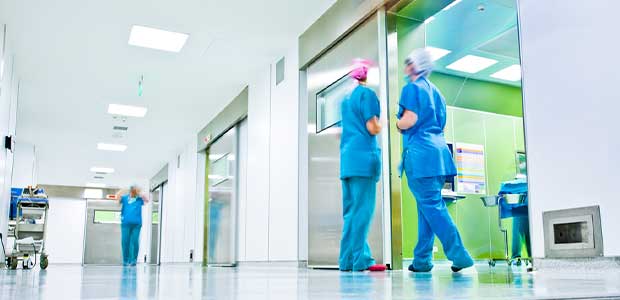
Environmental Sampling for Infection Control at Health Care Facilities
An environmental sampling program can be a valuable tool in reducing risk.
Nosocomial infections are infections that are acquired while at a health care facility and are not present at the time of admission. Nosocomial infections are many times also called hospital acquired infections (HAI).
The Centers for Disease Control and Prevention (CDC) estimates that one in 31 hospital patients and one in 43 nursing home residents has an HAI on any given day. This translates to approximately 2,000,000 HAIs per year in the U.S. The latest CDC estimate for overall direct costs related to HAIs was $35.7 billion to $45 billion.
Most health care facilities established infection control programs decades ago to reduce the incidence of HAIs. The size of the infection control programs varies depending on the size of the facility. Many larger facilities will have a physician and multiple nurses whose primary responsibility is infection control. Smaller facilities may only have one physician or nurse tasked with infection control.
A question that is often asked is when environmental sampling should be performed as part of an infection-control program and what types of samples should be used. The CDC does not recommend “random, undirected sampling.” However, the guidelines do contain recommendations for targeted sampling for defined purposes. The CDC mentions four specific reasons for targeted sampling:
To support an investigation of an outbreak of infections.
- For well-designed and controlled research.
- To monitor a potentially hazardous environmental condition, confirm the presence of a potentially hazardous chemical or biological agent and evaluate the successful abatement of the condition.
- For quality assurance to evaluate changes in the infection-control practices at a facility.
The guidelines also mention that some facilities conduct sampling to evaluate the effectiveness of filters that are used on the HVAC systems.
When a facility decides to conduct environmental sampling, decisions must be made about what types of samples to collect. The most basic types of samples to collect are air, surface and bulk samples. Each of these types of samples are collected for different reasons. Air samples are typically collected to evaluate airborne exposures which can be used to provide data for a research study or to evaluate the effectiveness of filters in the HVAC system. Air samples do not generally show the sources of exposure. Surface samples and bulk samples are typically used to identify sources of microbials at a facility.
Air sampling may be routinely performed at a facility. The types of air samples that are collected can determine the effectiveness of the data that is produced. The two basic types of air sampling are viable and non-viable. Since infections can only be caused by viable organisms, the use of non-viable sampling techniques will typically not provide useful data for infection control.
One of the most common air sampling techniques used by indoor air-quality professionals is the “spore trap” or “slit impactor.” This method collects particles using a cassette with a sticky strip under a slit impactor and the samples are read by a microscopist. Since the samples are not cultured, the viability of any microorganisms cannot be determined. The visual assessment of the samples is also very subjective, and the results will not be speciated. In some cases, the genus cannot be determined. This results in data that is not very useful for infection control.
The most commonly used sampling method that can determine the viability of microorganisms is the viable impactor. There are multiple examples of this type of air sampler, but each sampler will collect spores on some type of growth medium, which is then cultured at a laboratory. The results will only include viable microorganisms, and the laboratory can provide speciation for the results. Sampling can be conducted for both fungi and bacteria by using different media. In cases where infections include antibiotic resistant microorganisms, most laboratories can also test for antibiotic resistance.
Surface samples can be used to help identify sources that may be causative of infections in a facility. The most common surface samples are collected using swabs. The swabs are then cultured at a laboratory to identify viable microorganisms. As an example, I once sampled multiple operating rooms at a facility a few minutes prior to surgeries to help determine if there was any gross contamination of any surfaces that might contribute to infections during the surgery. I sampled 10 to 20 surfaces per operating room and also collected one air sample in each room. The results were used to evaluate and improve cleaning procedures.
Bulk samples can also be used to help identify sources of microorganisms. An instance of a bulk sample would be collecting water samples. This might be performed for a number of reasons. I sampled the water supply to a debriding room in a burn center once to try and identify the source of a fungal infection involving Rhizopus sp. Another common reason to collect bulk water samples would be to evaluate the concentrations of Legionella pneumophila to control the risk for legionellosis. Legionella bacteria can cause Legionnaires' disease, which is a serious type of pneumonia, or lung infection. People can become ill when they breathe in small droplets of water or accidentally swallow water containing legionella into their lungs.
If properly coordinated between the infection control personnel and the environmental professional, an environmental sampling program can be a valuable tool to reduce the risk of nosocomial infections, or infection(s) acquired during the process of receiving health care, at a health care facility.
This article originally appeared in the September 1, 2022 issue of Occupational Health & Safety.